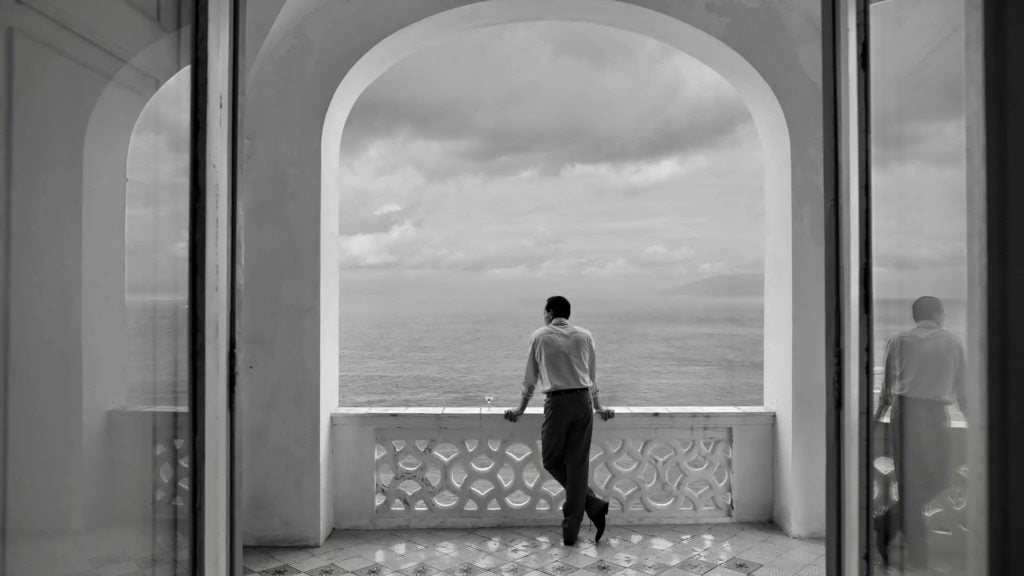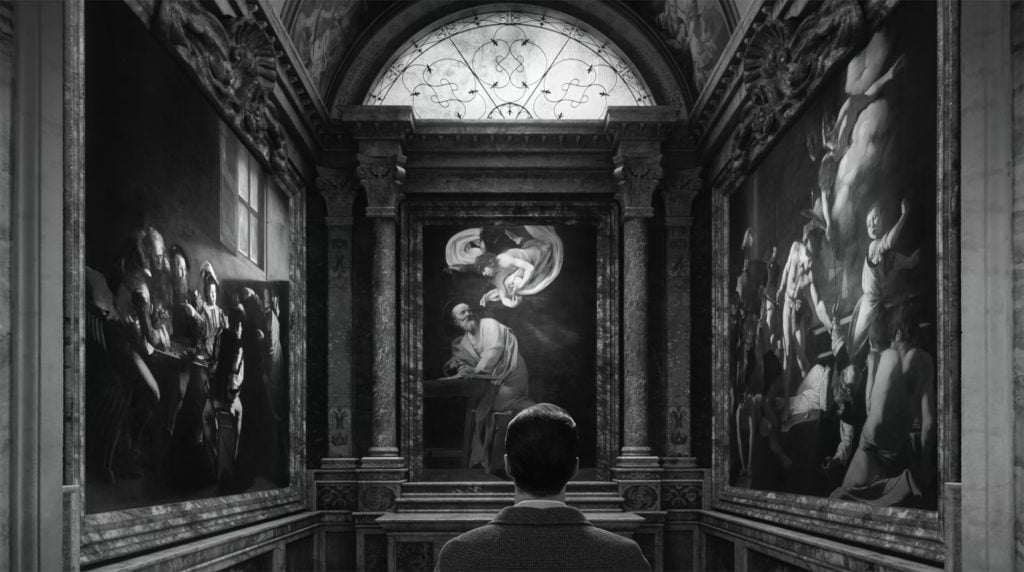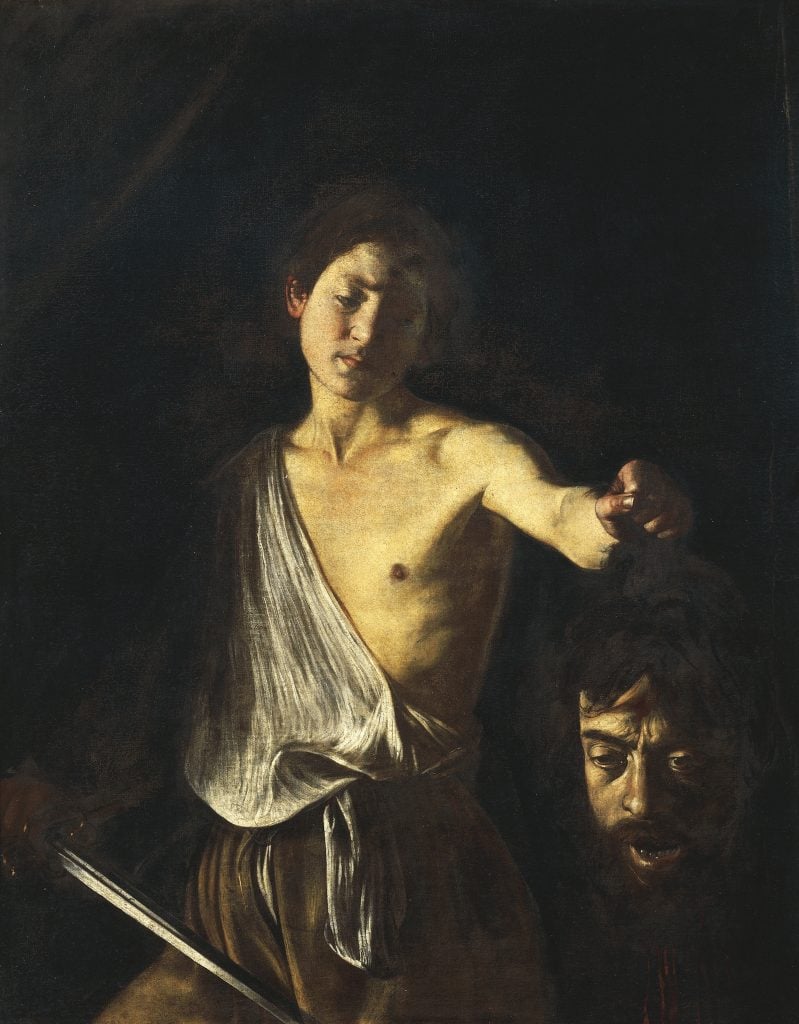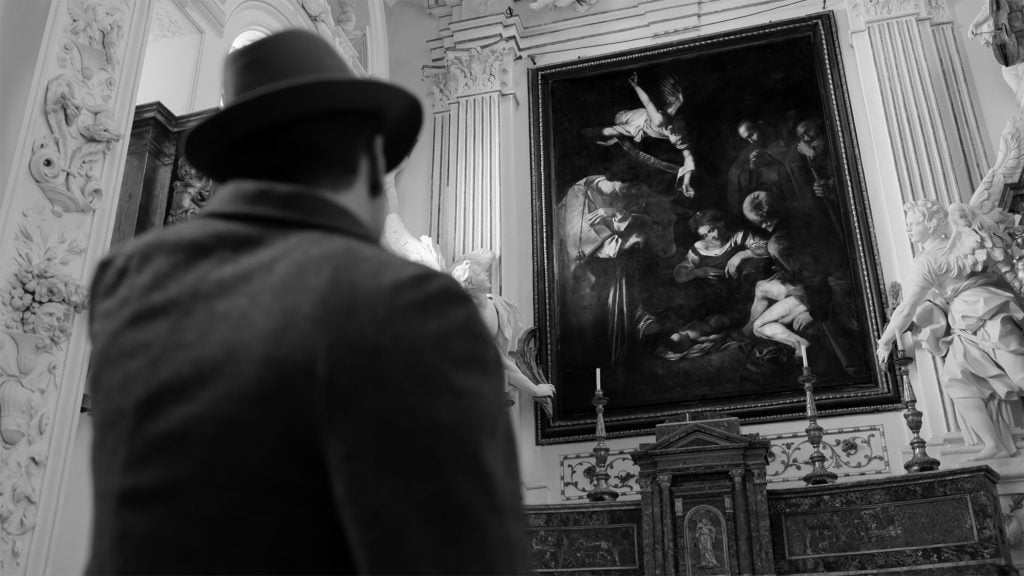Pop Culture
As Seen on ‘Ripley’: The Brutal Art and Life of Caravaggio
The Netflix series leans on a number of the artist’s paintings to tell the tale of a young conman.

The Netflix series leans on a number of the artist’s paintings to tell the tale of a young conman.

Min Chen

Netflix’s new series Ripley, like the many adaptations of Patricia Highsmith’s novel The Talented Mr. Ripley before it, delves into the unraveling mind and crimes of a young grifter. Tom Ripley, played by Andrew Scott, is at loose ends when he is recruited by a shipping mogul to travel to a small town in Italy to coax his son, Dickie (Johnny Flynn), back stateside. There, in the sunny environs of Atrani, the striver in Tom emerges as he schemes his way into taking over Dickie’s lavish life and identity.
And there’s much to strive for. The always-dapper Dickie is residing in a sprawling villa surrounded by breathtaking seaside views and furnished with art. His study is prominently hung with Picasso’s Guitar Player (1910) and his studio is filled with his amateur stabs at painting—abstracts, landscapes, still lifes—which are the opposite of Picassos. “I know I’m not a great painter… yet,” he tells Tom, whose only responses to Dickie’s artworks are a weak “Yeah” and also, “Okay.”

Andrew Scott and Johnny Flynn in Ripley (2024). Photo: Netflix © 2023.
Tom, however, is awed by another, real master. In the second episode, Dickie brings his artless friend to the Pio Monte della Misericordia, a church in Naples that has housed a Caravaggio for more than four centuries. Titled The Seven Acts of Mercy (1607), it looms over the altar with a dramatic depiction of the titular acts of charity. Amid the chiaroscuro is a saint visiting a beggar, a pilgrim seeking shelter, and in the background, two men headed to bury a dead one.
“He painted it when he was 36, a year after he murdered a man in Rome,” Dickie informs Tom of the Italian painter. “Colorful life. And death.” Indeed, Caravaggio had fled Rome for Naples after his life of debauchery caught up with him. After being sued and arrested for various offenses ranging from defamation to non-payment of rent, he was sentenced to death in 1606 for killing (intentionally or not) a man named Ranuccio. While his patrons in Rome shunned the artist, Naples embraced him.
It serves as a nice bit of foreshadowing in Ripley. Tom won’t be exercising any acts of mercy, but like the Baroque master, he will know violence. In fact, the next time we see Tom in front of another Caravaggio, he too has a murder under his belt.

Andrew Scott in Ripley (2024), viewing, from left, Caravaggio’s The Calling of St Matthew (1599–1600), The Inspiration of Saint Matthew (1602), and The Martyrdom of Saint Matthew (1599–1600). Photo: Netflix © 2023.
On his first day in Rome, where he has fled after Naples, Tom, now masquerading as Dickie, visits the San Luigi dei Francesi, which is installed with three Caravaggio works: companion pieces that tell the story of Saint Matthew. One of Caravaggio’s largest canvases (and which hides his self-portrait), The Martyrdom of Saint Matthew (1599–1600) draws Tom’s eye with its central scene depicting a fallen Matthew facing an assassin wielding a sword.
Later, Tom pops by the Galleria Borghese and views David with the Head of Goliath (ca.1610), which illustrates the biblical tale in gory detail (the artist had a thing for severed heads, particularly after he was sentenced to his own beheading). “In the painting, Caravaggio links the murderer and victim,” Tom overhears a museum guide tell some visitors, “by portraying David as compassionate in the way he gazes at the severed head of Goliath.” It’s this painting that flashes in Tom’s mind when he commits his second homicide.

Caravaggio, David with the Head of Goliath (1609–10). Photo by DeAgostini/Getty Images.
Then, Caravaggio himself shows up. The season finale opens with a gothic-tinged flashback to 1606, the night Ranuccio was killed. With police hot on his tail, we find the painter sitting in a large manor, warming himself by the fireplace with a glass of red—also the beverage of choice for a post-murder Tom. Ripley is no painter, the series seems to say, though he has perfected his own art, one of cunning, deceit, and brutality.
“That little parallel I thought was interesting,” said director Steven Zaillian. “For the final episode, I thought it would be a lot of fun to suddenly flash back 350 years and have people say, ‘Are we watching the same show?’ And then realize, ‘Oh, yes, Caravaggio. I understand this.'”

Andrew Scott in Ripley (2024), viewing a replica of Caravaggio’s Nativity with St. Francis and St. Lawrence (1609). Photo: Netflix © 2023.
From Rome, Tom travels to Palermo where he encounters Caravaggio’s Nativity with St. Francis and St. Lawrence (1609) in the Oratory of Saint Lawrence. The actual painting, centering on the newborn Christ, was notoriously stolen in 1969 and remains missing to this day; a replica was created for the scene. But as it hangs in Ripley, it tracks with Tom’s own impending rebirth. Tom, who at this point is being trailed by the police just like the painter, gazes coldly at the artwork and walks out to mount his final deception—and transformation.
As Seen On explores the paintings and sculptures that have made it to the big and small screens—from a Bond villain’s heisted canvas to the Sopranos’ taste for Renaissance artworks. More than just set decor, these visual works play pivotal roles in on-screen narratives, when not stealing the show.